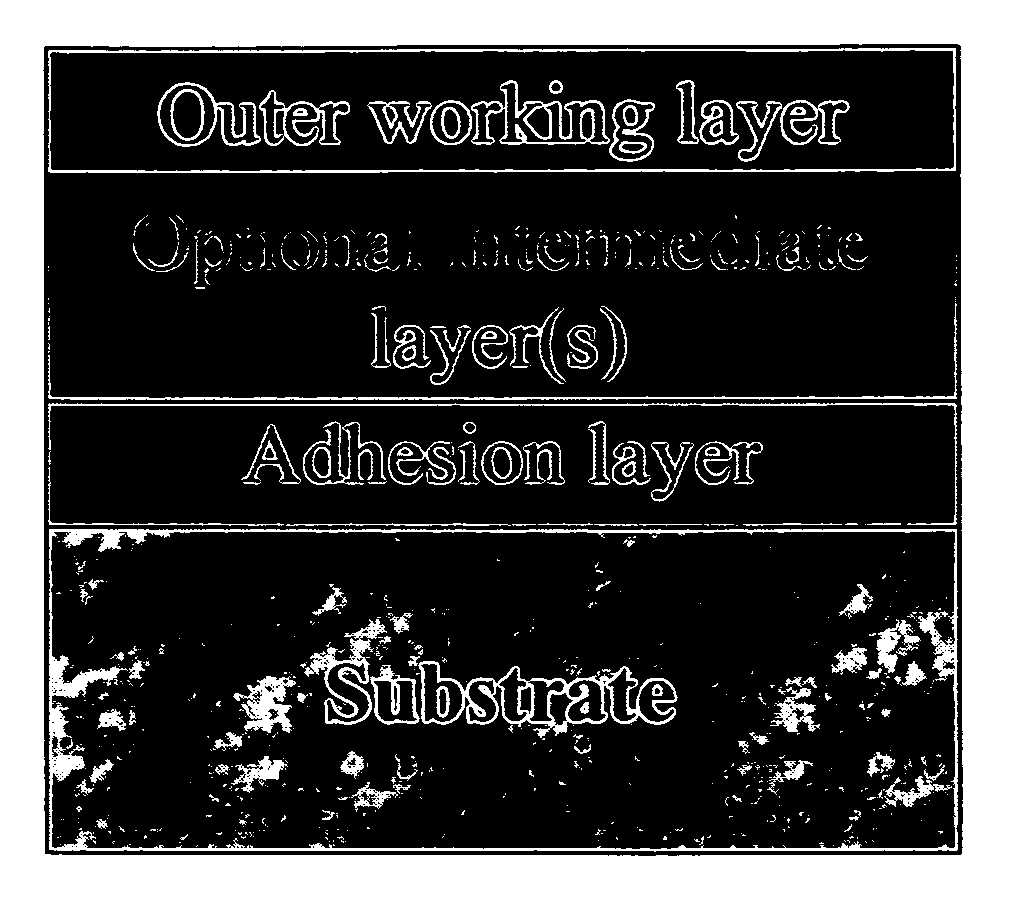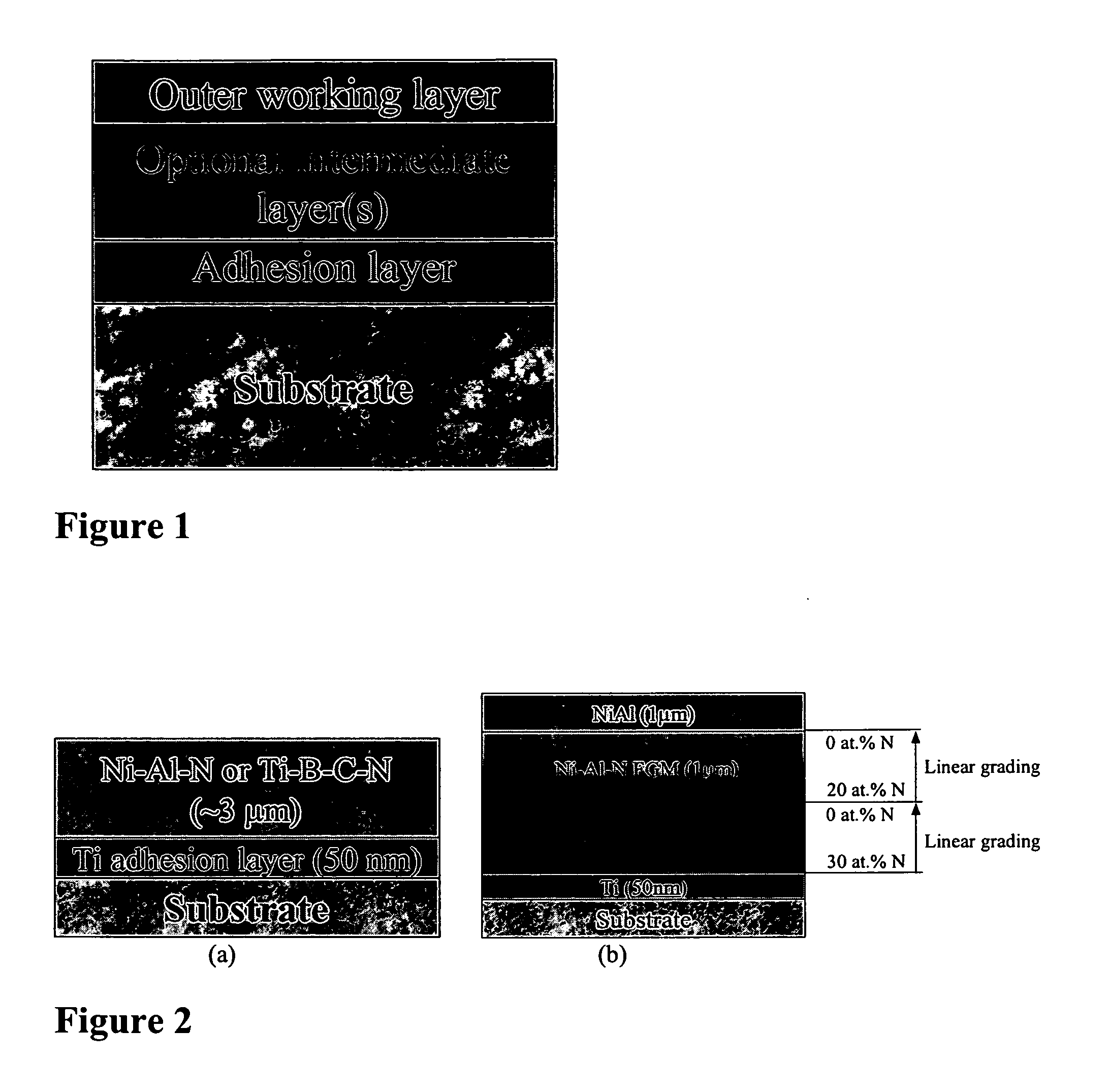Coatings for glass molding dies and forming tools
- Summary
- Abstract
- Description
- Claims
- Application Information
AI Technical Summary
Benefits of technology
Problems solved by technology
Method used
Image
Examples
Embodiment Construction
[0025] There is currently no single coating that can simultaneously provide the best accommodation of chemical, physical, and mechanical properties desired to achieve high performance and reliability for glass forming applications. To accomplish these objectives, the present invention provides new methodologies based on the concept of a functionally graded coating system. A suitable non-sticking (by molten glass), oxidation-resistant and wear-resistant working layer has been identified. This is combined with an optimized coating architecture built to cope with the stresses induced by the repeated heating and cooling of the tool, and thus enhance the performance and reliability of the coating system during service. One of the new design methodologies for coatings used on dies and tools is depicted schematically in FIG. 1. The coating depicted there is particularly well suited for coating the surface of tools and dies used to mold glass.
[0026] Thus, the coatings of the present invent...
PUM
| Property | Measurement | Unit |
|---|---|---|
| Fraction | aaaaa | aaaaa |
| Fraction | aaaaa | aaaaa |
| Thickness | aaaaa | aaaaa |
Abstract
Description
Claims
Application Information
 Login to View More
Login to View More - R&D
- Intellectual Property
- Life Sciences
- Materials
- Tech Scout
- Unparalleled Data Quality
- Higher Quality Content
- 60% Fewer Hallucinations
Browse by: Latest US Patents, China's latest patents, Technical Efficacy Thesaurus, Application Domain, Technology Topic, Popular Technical Reports.
© 2025 PatSnap. All rights reserved.Legal|Privacy policy|Modern Slavery Act Transparency Statement|Sitemap|About US| Contact US: help@patsnap.com


